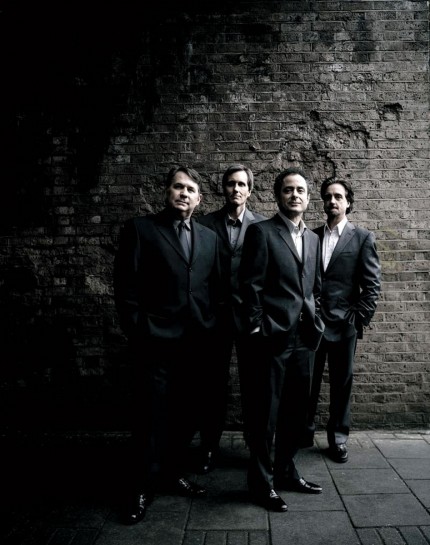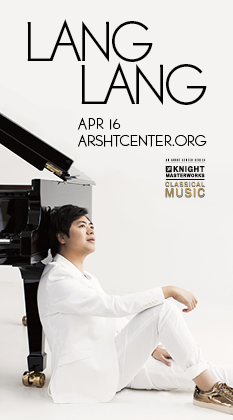Emerson Quartet unveils compelling new Adès work at Kravis

The Emerson Quartet gave the Florida premiere of Thomas Adès' "The Four Quarters" Tuesday night at the Kravis Center in West Palm Beach.
The main hall of the Kravis Center for the Performing Arts was designed for events such as Cats, Rigoletto and performances by full symphony orchestras. But Tuesday the four members of the Emerson String Quartet took the stage before an audience that filled most of the West Palm Beach auditorium’s 2,193 seats, a highly respectable turnout for chamber music and a testimony to the eminence the Emerson Quartet has achieved in its 35-year career.
The concert opened with Haydn’s Quartet No. 67, Op.77 No. 2, with the musicians apparently requiring a few minutes to warm up and play with their usual assurance (Haydn seems doomed to dwell at the beginning of programs, serving as a vehicle for working kinks out of the fingers before turning to other composers.).
Handling the first violin part, Eugene Drucker displayed some initial intonation problems, although his role was by far the most complex and exposed. But for the most part, the first movement sounded like Haydn as it was meant to be played, high-spirited but with a savor for the dark minor-key sections that gave the movement depth. The quartet’s tonal palette is vast, from the plush, sugary sound they brought to the second movement’s trio to the transparent, effortlessly hall-filling sound of Drucker’s ornamentation over a melody played by cellist David Finckel.
The Four Quarters by the young British composer Thomas Adès was commissioned by Carnegie Hall for the Emerson String Quartet, which performed the world premiere in March of this year. Intended to portray a day from sunrise to sundown, the four-movement work clearly made an underwhelming impression on the audience, judging from the tepid applause (the Beethoven performance that ended the program generated a standing ovation).
This is surprising since the Adès work is a highly accessible composition with memorable motifs that remained in the ear after the performance. In the first section, glassy, swiftly bowed notes in the violins generated a strong sense of rhythm and built to a climax that presumably indicated the rising sun. Although in the last movement Adès makes extensive use of the violins’ capacity for upper-register tones, the music never sinks into eerie, world-weary cliché. The movement used complex but powerfully delineated rhythms and created a strong sense of forward motion, as the ghostly tones deepened into full-throated string playing that brought the work to its climax.
The final work on the program was Beethoven’s monumental String Quartet No. 14, Op. 131, a sprawling seven-movement composition that is one of the great cornerstone of the repertoire. The quartet seemed most in their element here. Although the four musicians seemed to play with great concentration in a work they’ve rehearsed and played throughout their careers, they brought a headlong spontaneity to the performance that made it sound almost as fresh as the Adès work.
The last movement, in particular, rushed forward with a driving force and occasional scrappiness that indicated the spontaneous nature of the performance on stage, giving the movement a rugged grandeur that a more controlled performance could not have achieved. The fourth movement Andante came off with pulsing tension, with a mysterious, searching but sonorous build up to the arrival of the Presto movement. In this movement they achieved a unique sound, with pin-point touches of the bow to the strings that made the passage sound like broken glass, with every note ringing out clearly.
Posted in Performances
Leave a Comment
Wed Dec 7, 2011
at 2:27 pm
No Comments





